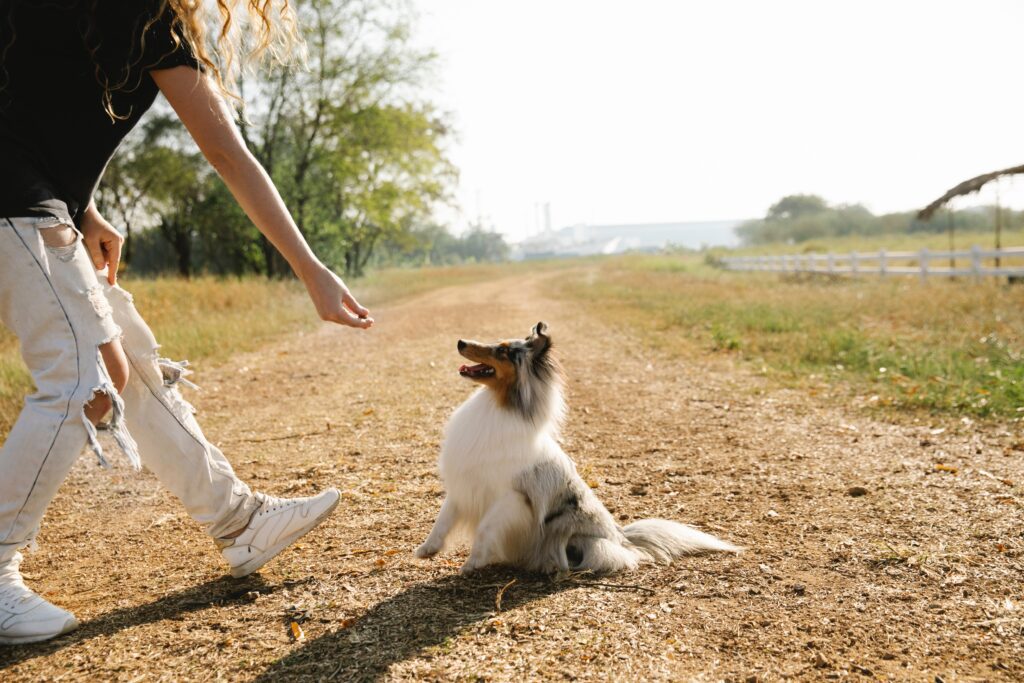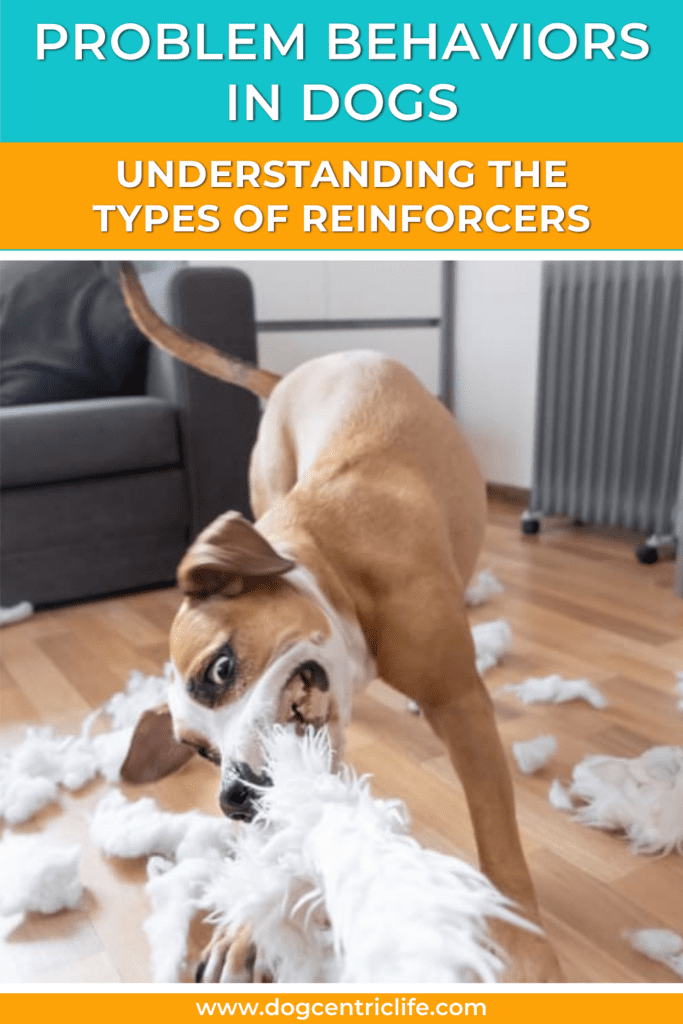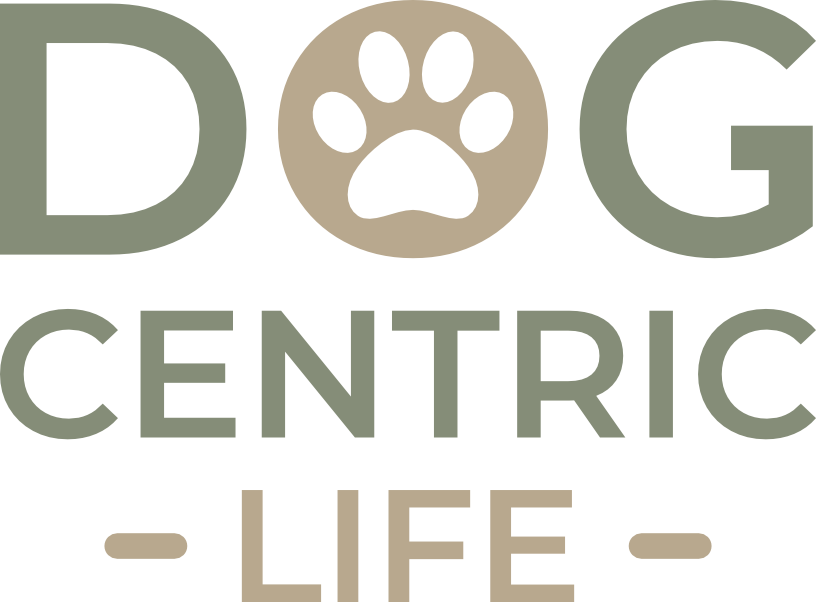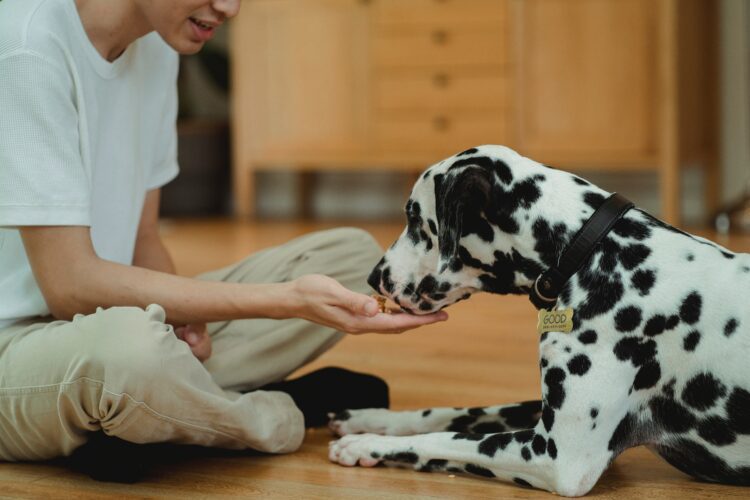Positive reinforcement is an incredibly effective way to train dogs and other animals. When we reinforce a behavior, according to learning theory, there is an increased likelihood that the behavior will continue to happen, or, increase in frequency. However, it is important to mention that reinforcement doesn’t necessarily have to come from you. So yes, when you ask your dog to sit and he does… and you give him a treat… you are reinforcing the behavior of sitting, but there are plenty of behaviors that are reinforced WITHOUT your help. Let’s discuss reinforcers to better understand the categories that they are divided into: intrinsic and extrinsic reinforcers.
Before we jump into this… I should also remind you that ultimately the dog is the one who decides if a reinforcer is, in fact, rewarding for them. Your dog may find a toy valuable enough to act as a reinforcer (or reward) and your neighbor’s dog may not care about toys but finds food treats highly valuable. Every dog will be different and it is up to you, when training your dog, to find out what reinforcers are valuable enough to make your dog want to repeat behaviors.
Let’s start with the more straight forward of the two… extrinsic reinforcers…

EXTRINSIC REINFORCERS
Extrinsic reinforcers are external to the dog, or, they happen from outside the dog. These reinforcers are given to a dog as a ‘reward’ for exhibiting a behavior from an outside source… like you, a family member, or a handler. When you think about dog training, this is likely what comes to mind.
As an example, you give your dog the cue “sit” and provide them with a treat when they sit. In this case you’re reinforcing, or “rewarding”, the behavior – “sit” – and by doing so you are increasing the likelihood of this behavior to occur the next time you give the cue. This extrinsic reinforcer (or reward) is provided to make the activity more enjoyable for your dog… and makes them more likely to associate sitting with a positive outcome.
The truth is, dogs are opportunistic beings. They don’t do things to please us… they do things that make us happy so they get something positive in return! The Association of Professional Dog Trainers (APDT) explains it this way:
“Dogs do what they do ultimately because it works for them…. we need to understand that this is a mutual relationship, and dogs benefit from their relationships with us through getting food, shelter, play, and affection, among other things. Therefore when a dog does something that makes us happy, we shouldn’t jump to the assumption that a dog “only wants to please us” —they are doing things to make us happy because it also gets them a treat or a belly rub or a pleasant environment to be in.”
Extrinsic reinforcement examples in dogs
Remember, not all dogs will find all the items on this list extrinsically reinforcing, or rewarding. This will vary from dog to dog and, in training, it is up to you to determine what your dog finds valuable enough to act as a reinforcer. If something isn’t considered valuable to the dog, it will not work as a reinforcer. Here are some common extrinsic reinforcers:
- Treats
- Toys
- Praise
- Belly rubs
- Bones
- Attention
- Play time
Now, let’s move on to intrinsic reinforcers…

INTRINSIC REINFORCERS
Intrinsic reinforcers, like the name suggests, occur naturally within your dog. With this class of reinforcers, your dog is rewarded simply by exhibiting a particular behavior. Let’s look at a Retriever… which traditionally are lovers of the game fetch. You throw a ball for a Retriever and the act of retrieving itself is rewarding for them! It’s what they love to do! This behavior is intrinsically, or naturally, reinforced because of the pure enjoyment they get from playing the game. They don’t need a treat each time they bring the ball back… just for you to throw it again… and again… and again!!
But not all dogs will find the game of fetch intrinsically reinforcing! Those dogs that don’t may need additional external – or extrinsic – reinforcement to get them to play fetch. So looking at the example of playing fetch with your dog… if your dog need extrinsic reinforcement you may need to give you dog a treat when they retrieve the ball and bring it back to you.
Intrinsic reinforcement examples in dogs
Here’s the reminder again… each dog is an individual. Some dogs will not find these behaviors intrinsically reinforcing, but, as a general rule of thumb, these are some very common intrinsically reinforced behaviors:
- Digging
- Chewing
- Nipping
- Barking
- Jumping
- Chasing prey
- Urine marking
- Sniffing
- Licking
- Playing
Notice anything about many of these behaviors? If you think about it, this is a list of many behaviors that we, as humans, consider “problematic” in our dogs. Why is this? Well, again, a behavior that is reinforced is more likely to continue, or increase in frequency… and that reinforcement doesn’t have to come from you (with an extrinsic reinforcers)! These types of behaviors, which are often reinforced naturally and without your help, can be some of the most challenging behavior problems to overcome. Every time your dog performs such a behavior, it’s reinforced and becomes more ingrained.
Next time your dog exhibits a behavior… wanted or unwanted… see if you can figure out whether the behavior is reinforced extrinsically (externally, by you or someone else, or even the environment)… or intrinsically (naturally occurring within themselves).
Being aware of these distinctions is vital when it comes to behavior modification. You need to know if a behavior is being intrinsically or extrinsically reinforced before you can develop a plan to modify a problem behavior. If you get it wrong… your behavior modification plan will remain just that… a plan. If, in fact, you are dealing with a problem behavior with your dog, it’s best to contact a qualified professional dog trainer to help you… and your dog… hopefully manage the problem.








0 Comments